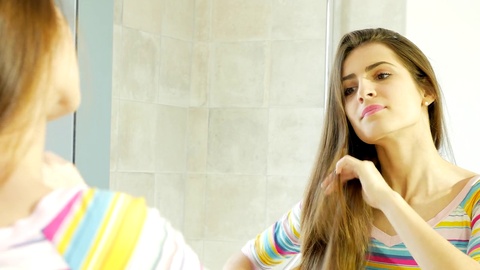
Can’t remember which verbs go with être and which go with avoir? Come and meet Dr. Mrs. Vandertramp, your right-hand woman for mastering the passé composé and its auxiliaries. She can’t wait to meet you!
Want to find out how Dr. Mrs. Vandertramp can help you?
The Passé Composé
If you’ve been dabbling in the French language long enough, you’ll have no doubt come across the passé composé tense. Want to tell your friend about the gorgeous prom dress you saw in the store yesterday? The passé composé will allow you that. Want to tell your family about the crazy thing that happened at work today? You guessed it; the passé composé will also allow you that. It basically exists for you to be able to talk about a specific action or a succession of specific actions that took place in the past.
It’s also totally valid if you can’t remember how this tense is formed, because we’ve added a quick reminder below just in case.
Formula: Pronoun + auxiliary verb + past participle of verb = passé composé
Just to circle back to the basics for a second; the French personal pronouns you’ll always need to use for conjugating are: Je, Tu, Il/Elle, Nous, Vous and Ils/Elles. The auxiliary verbs are être and avoir . And that leaves us with the past participles, which we’ve covered in the table below.
| Regular -er Verbs | Regular -ir Verbs | Regular -re Verbs |
| Past Participle ending: -é | Past Participle ending: -i | Past Participle ending: -u |
| Example: parler (to speak) -> parlé | Example: finir (to finish) -> fini | Example: rendre (to return) -> rendu |
Example:
Il est descendu en voiture (He drove down by car)
Here, the pronoun is il and the auxiliary verb is est (être). The verb is descendre (to descend) so its past participle form descendu.
Before moving on, we can’t forget about the irregular verbs. Let’s have a look at how the three most common are conjugated.
- faire (to do) is fait in every grammatical person.
- voir (to see) is vu in every grammatical person.
- avoir (to have) is eu in every grammatical person.
But how does anyone ever know which auxiliary to use, you ask? We’ve got just the trick. Dr. Mrs. Vandertramp to the rescue!
Blow the Trumpets for Dr. Mrs. Vandertramp
Why so much fuss over a mere name? Well, this is not just any name – Dr. Mrs. Vandertramp will actually allow you to remember which verbs use the auxiliary être and make the passé composé a piece of cake! Now who doesn’t want that? Have a look at the table below to see what we mean.
| Letter | Indicated Verb |
| D | Devenir (to become) |
| R | Revenir (to come back) |
| M | Monter (to go up) |
| R | Retourner (to return) |
| S | Sortir (to go out) |
| V | Venir (to come) |
| A | Aller (to go) |
| N | Naître (to be born) |
| D | Descendre (to go down) |
| E | Entrer (to enter) |
| R | Rentrer (to go home/to return) |
| T | Tomber (to fall) |
| R | Rester (to remain/to rest) |
| A | Arriver (to arrive) |
| M | Mourir (to die) |
| P | Partir (to leave) |
If you look carefully, most of the verbs depict an action of some sort. So if you’re stuck on a verb that’s generally implying somewhat of a movement, think être. The rest will take avoir.
Watch this video for a quick recap on what our friend Dr. Mrs. Vandertramp can do:
Storytelling mnemonic
If the Dr. Mrs. Vandertramp mnemonic just isn’t doing it for you, have a go at this one instead. It’s time to dream up an imaginary house (its aesthetic is totally up to you!) and then continue by placing characters there; it can be just you, a couple, two best friends, brother and sister – whoever you want. We have to warn you, the story you will be telling won’t be very exciting but it might just do the trick to help you remember which verbs go with être.
For this example, we’ll be using a couple in our story.
The husband and wife return ( retourner ) home after a long day at work. They arrive at the house ( arriver ), unlock the door and enter ( entrer ). The wife goes upstairs ( monter ), while the husband remains ( rester ) downstairs to cook dinner. Once the food was ready, the husband called to his wife to come downstairs ( descendre ) to eat. But as she was coming down, she fell ( tomber ) down the stairs. She was definitely injured, and the husband decided that she needed to go ( aller ) to the hospital. Since he wanted to come ( venir ) with her, they both go out ( sortir ) of the house and leave ( partir ) for the hospital. They eventually arrived ( arriver ) after passing through ( passer par ) many busy roads.
Now, unless you can fit the rest of the verbs ( devenir, revenir, rentrer, naître, mourir ) in your story, these will unfortunately have to simply be memorised.
The Curious Case of ‘Passer Par’
Passer par is a tricky one and it’s worth watching out for it. Depending on the context, it can take either of the auxiliary verbs. On its own, passer (to pass) takes avoir but when it’s followed by par (by) it takes être.
Example:
Nous sommes passés par la boutique (We passed by the shop)
Nous avons passé la boutique (We passed the shop)
Notice how the auxiliary agrees with the pronoun both in gender and in number; and that’s an important rule to remember for the passé composé.
Embrace The Exceptions
Unluckily, some Dr. Mrs. Vandertramp verbs can also be used with avoir in the right context. Switching between auxiliaries changes the entire meaning of the sentence, so it’s important to keep an eye out for when it does happen. However, this mostly happens these verbs (that go with être ) are transitive which means they substitute the direct object in a sentence.
Example:
J’ai sorti le chat dehors (I took the cat outside)
And there you have it – we’re so glad you were finally able to meet Dr. Mrs. Vandertramp!
See you next lesson – and in the meantime, don’t forget to practice! If you do need any help, don’t hesitate to get into contact with one of our online French Tutors.



